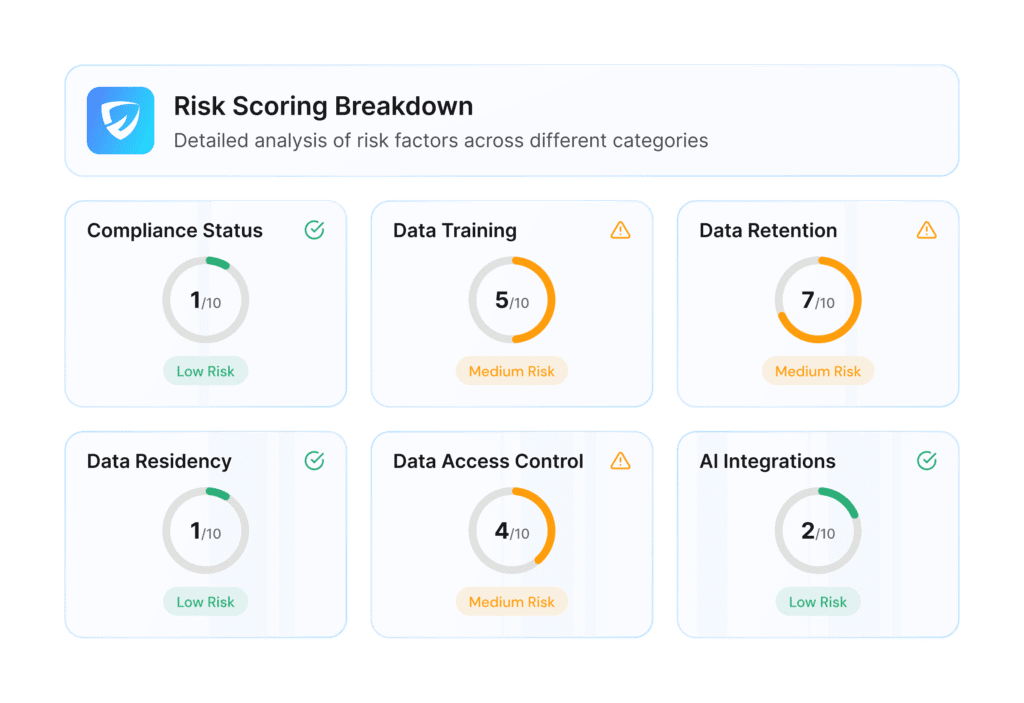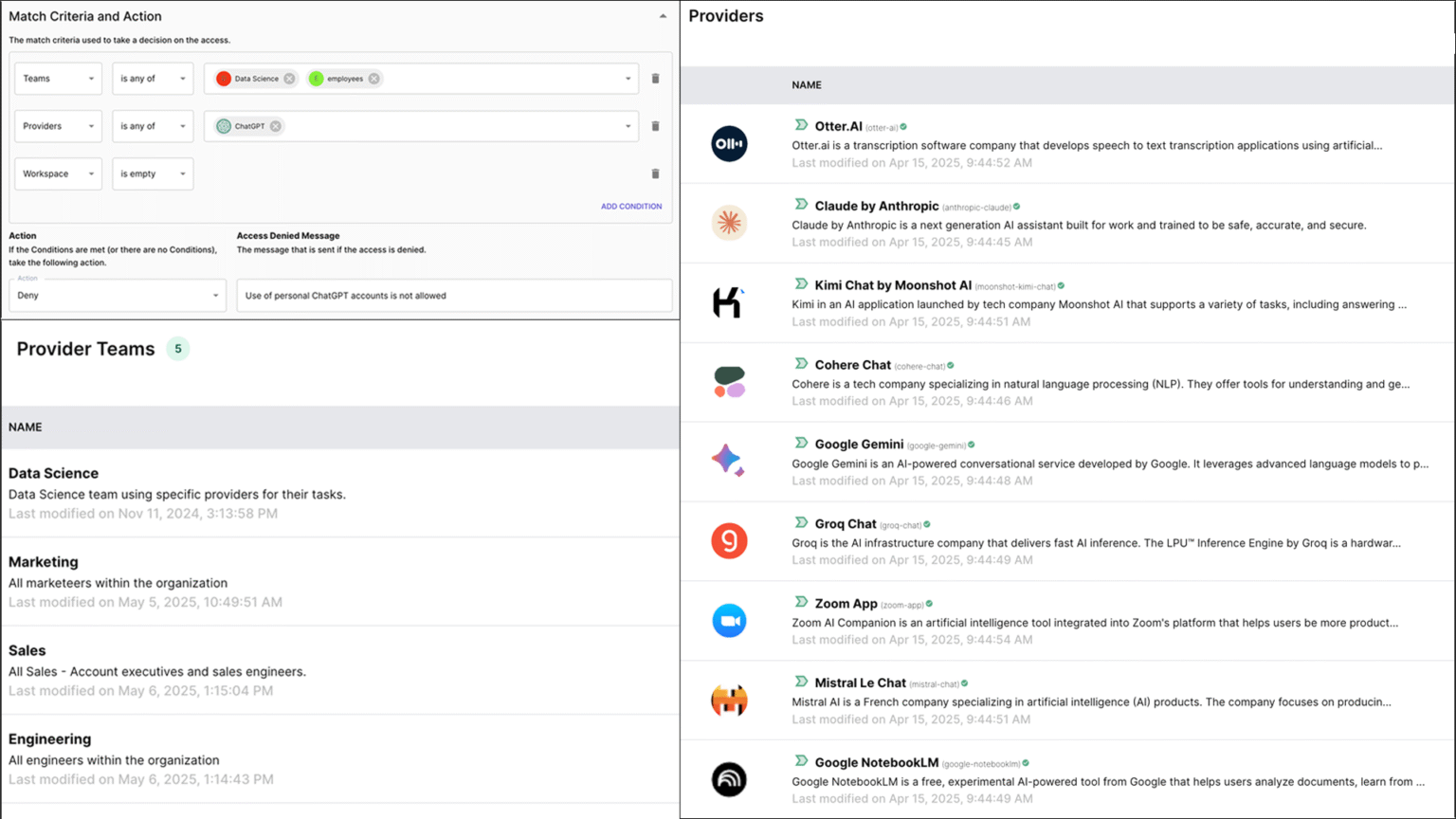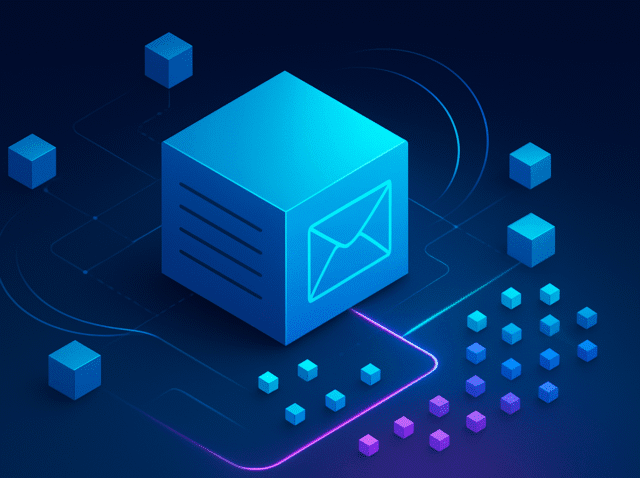Adaptive Risk Engine
Your AI Risk Perimeter Just Got a Whole Lot Smarter
Acuvity’s Adaptive Risk Engine delivers real-time, context-aware protection for every Gen AI interaction—dynamically adjusting controls based on behavior, risk, and regulatory needs. It’s the brain behind secure AI adoption at scale, built to evolve as fast as the threats do.

2025 State of
AI Security Report
What the latest data reveals about AI risk, budgets and biggest threats ahead.
Get Your FREE Risk Report
Want to know how risky your AI Services might be? Send us up to five services and we’ll send you back a customized risk report
How It WorksHow the Adaptive Risk Engine Works
At the core of Acuvity’s RYNO Platform, the Adaptive Risk Engine (ARE) continuously analyzes Gen AI interactions across users, agents, and applications. It doesn’t rely on static policies—instead, it uses real-time behavioral data, contextual signals, and provider intelligence to dynamically assess and respond to risk as it evolves. This ensures security decisions are always aligned with the current threat landscape and business context.
User & Agent Risk Awareness
The Adaptive Risk Engine tracks how users and AI agents interact with Gen AI tools, detecting sensitive data in prompts—like PII, financial records, or regulated content—and flagging when agents behave outside their intended scope. It also monitors for misuse or overreliance on AI-generated outputs that could introduce hallucinations or biased information into business processes. This user-centric view allows for early intervention before risky behaviors escalate.
Looking Beyond the User: Provider-Level Risk Intelligence
Not all Gen AI tools are created equal. The engine continuously evaluates the trustworthiness of AI providers by analyzing their data sharing policies, compliance certifications, data residency practices, and third-party dependencies. Whether your teams use ChatGPT, Claude, or niche AI agents, the system scores and updates provider risks in real time—giving your security team the visibility they need to act with confidence.
Continuous, Context-Aware Risk Scoring
Unlike point-in-time assessments, the Adaptive Risk Engine builds a living risk profile for each user session. It factors in identity, prompt content, device characteristics, location, and access history to compute a real-time risk score. This allows it to make on-the-fly decisions about access, data sharing, and usage policies—without interrupting the user experience.
Autonomous Real-Time Response
When risk thresholds are met, the engine acts instantly. It can block or modify unsafe prompts, redact sensitive inputs, revoke access, isolate sessions, or trigger automated workflows—all without human intervention. It also adapts to emerging threats by learning from live data, enabling fast, policy-driven responses to zero-day attacks and novel misuse patterns.
Compliance & Ethical AI Enforcement
The engine is built for regulated environments, ensuring Gen AI use aligns with GDPR, HIPAA, SOC 2, and other frameworks. It continuously monitors model outputs to detect bias, ethical violations, or policy breaches, and maintains a transparent audit trail of AI interactions and risk decisions—supporting both accountability and compliance at scale.
join our weekly demoGet the TLDR DEMO:
See How Full Spectrum Visiblity gets Control of Shadow AI

We get it, you’re busy but you want to learn more and you aren’t ready for a full-blown product walkthrough.
No problem, that’s exactly why we hold a weekly, open-house style, live demo from one of our top experts on AI Governance. We’ll cover a lot of topics, but we’ll also reserve time for your specific questions.
In this TLDR Demo you will see:
- Shadow AI
- AI Risk
- Context IQ
- Best Practices
- Enforcement
- Compliance
faqEverything you need
to know about AI Risk
What is Shadow AI?
Shadow AI refers to the use of artificial intelligence tools—especially generative AI systems—within an organization without the awareness, approval, or oversight of its IT, security, or governance teams. It is analogous to “shadow IT” (employees using unauthorized software or services), but with additional risk dimensions that come from how AI processes, stores, and outputs data.
Key Characteristics of Shadow AI
Unmonitored usage: Employees, teams, or departments adopt AI tools (for example ChatGPT, code assistants, or AI plugins) without going through security review or formal governance.
Blind spots: Because these tools are not on the organization’s sanctioned list, standard security controls (e.g. data loss prevention, audit logging) may not apply.
Data exposure risk: Sensitive information (customer data, proprietary code, internal strategy docs) may be pasted into prompts or passed to AI tools that do not guarantee data protection or regulatory compliance.
No traceability: Without centralized logging or audit trails, it is difficult to tell who used what AI tool, when, or what data was shared.
Propagation of errors or hallucinations: Outputs from unsanctioned AI tools can include hallucinated or incorrect content, which may then be reused, versioned, or integrated into downstream workflows.
Why Shadow AI is a Security Risk
Compliance and regulation
Many industries must abide by strict data privacy, security, or confidentiality rules (e.g. GDPR, HIPAA, financial regulations). If sensitive data enters an AI model outside approved boundaries, the organization may violate compliance regimes and be held liable.Intellectual property exposure
If proprietary code, trade secrets, or internal logic is fed into AI tools that do not guarantee non-retention, those assets may leak or become accessible to external parties.Attack surface expansion
Shadow AI introduces new vectors for attackers. For example, malicious prompt injections, backdoors, or model manipulation become possible when the enterprise lacks visibility.Lack of governance over model behavior
Sanctioned models are typically vetted for bias, security, and behavior. Unsanctioned models may produce outputs that violate policy, mislead users, or spread disinformation.Cascade of “shadow data”
Even if the input was innocuous, the AI output (e.g. summaries, code snippets, analysis) often gets stored, shared, or integrated into enterprise systems. That output then becomes “shadow data”—it may not be subject to backup, classification, or DLP rules.
How organizations detect or mitigate Shadow AI
Discovery & inventory: Scan networks, endpoints, browser plugins, developer environments to detect usage of AI tools outside approved ones (e.g. shadow browser extensions, AI APIs).
Access gating: Restrict or block connections to external AI endpoints unless explicitly allowed.
Data controls at the boundary: Use controls to inspect, classify, and possibly redact or block sensitive data before it is sent to any AI service.
Policy and governance: Adopt an “acceptable AI usage policy” that delineates which AI tools are approved, under what conditions, and what data may or may not be shared.
User education: Train employees about the risks of pasting internal or regulated data into third-party AI systems.
Adaptive risk engines: Use systems like Acuvity’s Adaptive Risk Engine to continuously monitor AI use, detect anomalies or disallowed models, and enforce policy in real time.
Acuvity integrates Shadow AI Discovery as a feature of its Adaptive Risk Engine, allowing the system to surface AI use that lies outside the approved perimeter.
Can Code Plugins Create Risk?
Yes. Code plugins (for example, AI-assisted development extensions, code autocomplete tools, or plugins that connect to AI models from IDEs) can introduce significant risk. Because these tools operate inside development environments, they often interface with internal data, project code, secrets, and repositories. Below are the ways code plugins can create risk, and how an adaptive risk engine can help manage them.
Risk pathways introduced by code plugins
Data exfiltration via prompts or context
Many AI coding assistants send context around the developer’s environment—e.g. nearby code lines, comments, file contents, function signatures—as part of the prompt to the AI backend. If that context contains proprietary code or confidential logic, it may leak into the AI provider’s environment.Membership leakage / inference attacks
Suppose the plugin’s underlying model was trained on proprietary code or valuable internal data. Attackers may exploit membership inference attacks to find out whether a certain code snippet was in the model’s training data. A notable study shows that for code models, membership inference attacks can have high success rates. arXivDependency on external model endpoints or runtime APIs
Many plugins communicate with remote AI model endpoints or microservices. If those endpoints are compromised or malicious, they can act as exfiltration points for data inside the plugin or even push malicious code back to the user’s environment.Supply chain and dependency risk
Plugins often depend on open-source libraries or frameworks. If one of those dependencies is compromised, it can introduce vulnerabilities. Or if the plugin is malicious (or becomes malicious via update), it can stealthily exfiltrate or tamper with internal systems.Unauthorized API calls / tool chaining
A plugin might call into other services (databases, internal APIs, or microservices) to gather context or augment features. That can create cross-service data leaks if not constrained.Elevated privileges / secrets exposure
Plugins may access environment variables, credentials, or IDE secrets (e.g. API keys, tokens). If those are passed to the AI backend or stored insecurely, they become a vector for credential theft.Behavioral drift or misuse
As the plugin evolves, or if a user misuses it (intentionally or accidentally), it may begin doing things outside its original purpose—for example injecting code, making unauthorized changes, or executing dynamic queries.
How an adaptive risk engine can mitigate plugin risks
An adaptive risk engine (like Acuvity’s) can apply context, behavior, and policy in real time to reduce plugin risk.
Real-time behavioral monitoring
The engine tracks how the plugin is used: frequency, code submissions, file types, user identity, location, etc. It can flag anomalous uses (e.g., large code dumps, unusual file types) for review or automated intervention.Contextual inspection of plugin prompts and responses
The engine inspects plugin prompt payloads, classifies sensitive content (e.g. proprietary code, PII, secrets), and may redact or block them before transmission to the AI model.Risk scoring and adaptive enforcement
Based on user role, environment, historical behavior, and sensitivity of data, the engine assigns a risk score. If the risk is high, it can degrade functionality (e.g. disallow certain plugins, limit prompt size, require justification or approval).Provider and model trust calibration
The engine can maintain trust scores for the AI model endpoint the plugin uses. If model risk increases (e.g. due to a compromise or changed policy), the engine can throttle or disable plugin access.Policy as code and dynamic policy engine
Policies can stipulate what types of code or data may be used with plugins, whether secret keys can appear in prompts, or whether certain file directories are off limits. The dynamic policy engine enforces those rules adaptively.Audit and traceability
Every plugin interaction is logged: prompt content (or sanitized form), user identity, timestamp, and enforcement action. This supports forensic investigation, compliance audits, and accountability.
Because code plugins operate at the intersection of development and AI, they are high leverage points for both productivity and risk. Without real-time safeguards, they can leak high-value intellectual property or secrets. An Adaptive Risk Engine helps create a controlled boundary between developer productivity and enterprise security.
Gateways to MCP Data Leakage
“MCP” stands for Model Context Protocol—a protocol (or emerging standard) that connects AI agents or models to external data sources, tools, or services. (Sometimes called “agent tooling connectors,” “AI context plugins,” or “tooling APIs.”) When AI agents or models can query external APIs, databases, or services via MCP, that connectivity is a critical point of data flow — effectively a “gateway.” These gateways, if misconfigured or compromised, can become channels of data leakage.
Below I list principal types of MCP gateways and how they lead to leakage, plus how an adaptive risk engine helps defend them.
Common gateways to MCP data leakage
Internal databases or data stores
AI agents may query internal databases (e.g. customer records, financial systems, HR systems) via MCP. If an agent requests large or unfiltered data, sensitive records (PII, IP, protected data) can flow out.APIs and microservices
Agents may call internal or external APIs via MCP. Uncontrolled parameterization or lack of filtering may expose sensitive fields, internal endpoints, or privileged API responses.File storage systems / document stores
Agents may access document repositories, file shares, or content stores. If permissions are too broad the agent might read files it should not, and exfiltrate them.Third-party services or SaaS connectors
Agents may integrate with external SaaS systems (e.g. CRM, analytics, cloud services). In that path, sensitive data can leak to external entities if connectors are granted excessive privileges or the external service is compromised.Agent orchestration / tool chaining
Agents may call other agents, or orchestrate workflows. This chaining can cause data to propagate across systems where policies are weaker, increasing the leakage surface.MCP server misconfigurations
The MCP server itself (the endpoint providing data access to agents) may lack proper authentication, authorization, rate limiting or input sanitization. A compromised or rogue MCP server can act as a wide open conduit. Acuvity+3arXiv+3Mend.io+3Prompt injection via MCP
An attacker might exploit prompt injection tricks to coerce the agent (via MCP) to fetch or return more data than intended. For example, a malicious prompt appended to a request may trick the agent into executing a broader query.
Why these gateways are high risk
Agents often bypass usual application front ends, so leakage via MCP may skip conventional access controls or logging.
MCP endpoints often operate in a more privileged context to support data access. That increases the potential impact if misuse occurs.
Leakage through these gateways may be silent — internal logs might only see the initial API call, not the breadth or nature of returned data.
Agents may retain or cache responses, or propagate them to other systems. Thus leakage is not only in-flight but persistently stored or shared.
How an adaptive risk engine defends against MCP leakage
Acuvity’s Adaptive Risk Engine plays a central role in protecting these gateways. Here’s how:
Contextual risk scoring per MCP request
For each agent request via MCP, the engine assesses context (which user initiated it, which model or agent, what the data classification is, the size and type of request) and assigns a risk score. If the score crosses a threshold, it can reduce or block the request.Data classification and redaction
The engine inspects what data is being requested, and what would be returned. It classifies sensitive fields (PII, PHI, trade secrets) and may partially redact or filter the output, or disallow it entirely.Prompt sanitization / filtering
The engine can intercept the prompt or query the agent is about to send to the MCP, check for suspicious patterns (like “give me all PII” or “dump entire DB”), and block or rewrite it.Access enforcement tied to identity and role
The engine ensures only appropriate user/agent identities can invoke certain MCP endpoints or request certain data scopes. If an agent is misused, the engine can revoke permissions dynamically.Rate limiting and anomaly detection
To prevent mass data extraction, the engine can throttle requests, detect anomalous frequency or volume, and raise alerts or block further calls.Trust scoring of MCP servers
The engine maintains reputation or trust scores for MCP servers. If an MCP endpoint shows signs of misbehavior, elevated risk, or is newly introduced, it can be restricted or quarantined.Audit trails and logs
Every MCP interaction (request, response, identity, timestamp, enforcement action) is logged for audit, forensic, and compliance purposes.
Because MCP is one of the critical interfaces connecting AI to data, securing those gateways is one of the highest-leverage defense moves. Adaptive, context-aware control over MCP requests helps prevent leakage even when agents or models try to overreach.
How does the Adaptive Risk Engine compute risk scores dynamically?
The Adaptive Risk Engine computes risk scores in real time by combining multiple signal types, continuously adjusting its assessment as context evolves. Its approach is not based on static rules alone. Instead it integrates behavioral, contextual, identity, and data-sensitive signals into a unified risk model. Below is a breakdown of how it works and what factors influence the score.
Signal categories and how they feed risk
User / agent identity signals
Role or job function
Prior behavior (historical usage, compliance history)
Device, location, authentication context
Trust level or alignment with known profiles
Prompt / input content signals
Classification of data in the prompt (does it contain sensitive or regulated fields?)
Length, structure, and complexity
Presence of suspicious keywords (e.g. “export,” “dump,” “all_records”)
Similarity to prior high-risk prompts
Model / provider signals
Trust rating of the AI provider or model
Known vulnerabilities, past incidents, data handling policies
Latency, anomaly, or drift in model responses
Agent or tool signals
Which agent or plugin is being used
Whether it has been whitelisted or sandboxed
The context in which it is operating (e.g. dev, test, prod)
Environmental / contextual signals
Time of day, location or IP zone
Network context (VPN, internal, external)
Concurrent sessions or conflicting accesses
Volume or rate of requests
Policy / compliance constraints
Regulatory limits on certain categories of data
Organizational policies (e.g. no PII in free model queries)
Escalation triggers (e.g. exceeding data thresholds)
Scoring model and adaptation
The engine uses a weighted scoring model or machine learning model that ingests the above signals, producing a continuous risk score for each interaction.
The score is dynamic: as more signals change (for example, a user escalates access, or the data being requested becomes more sensitive), the score is adjusted accordingly.
Based on thresholds, the engine may react (block, redact, require justification, throttle) or allow the request.
Why dynamic scoring is important:
Static rules are brittle: they fail when adversaries find novel patterns.
A dynamic model adapts to evolving threat patterns, adjusting enforcement without manual rewriting.
By combining signals, the engine reduces false positives—if a prompt looks risky in isolation but other signals (trusted user, low data sensitivity) are positive, the system can allow it rather than block outright.
Acuvity’s Adaptive Risk Engine continuously analyzes Gen AI interactions across users, agents, and applications, and dynamically adjusts control based on behavior, policy, and provider intelligence.
How does Acuvity’s Adaptive Risk Engine respond when risk thresholds are exceeded?
Once a computed risk score exceeds configured thresholds (which may differ by use case, user role, compliance regime, or policy tier), the Adaptive Risk Engine triggers one or more mitigation actions. The ability to respond in real time is central to its value: it doesn’t wait for human intervention if immediate risk is too high. Below is how response orchestration works.
Possible response actions
Blocking or rejecting the request
The system may refuse to allow a particular AI interaction (prompt, plugin call, agent invocation) that is too risky.Partial redaction or sanitization
If only part of the data is risky, the engine may remove or mask sensitive parts (e.g. PII, credentials) while allowing benign content to pass.Throttling or rate limiting
The engine can slow down or limit the volume or frequency of requests from a user or agent to limit damage.Requiring user justification or approval
In some cases, the engine may prompt the user for justification or escalate to a manager or security team. If approved, the action may proceed under more oversight.Session isolation or revocation
The engine may isolate the session, revoke the user’s access temporarily, or require reauthentication.Logging, alerting, and workflow triggers
A high-risk event triggers audit logging, security alerts, or automated workflows (e.g. to SOC, compliance, or incident management systems).Adaptive policy adjustment
The engine may adjust policy parameters (e.g. future threshold tightening, provider trust adjustments) in response to observed threats.
How the engine ensures continuity and usability
Actions are context-aware: low-risk actions may be allowed uninterrupted, while high-risk ones trigger enforcement.
The system may degrade functionality rather than fully block in borderline cases (for example limiting prompt size or disallowing code upload).
It maintains transparency and audit trails so that enforcement decisions can be reviewed, explained, or appealed.
The responses can integrate with policy orchestration systems (e.g. a “Dynamic Policy Engine”) to align with enterprise governance. Acuvity’s Dynamic Policy Engine is designed precisely to enforce real-time controls based on the risk signals generated by ARE.
By combining detection, scoring, and enforcement in one feedback loop, Acuvity’s Adaptive Risk Engine aims to stop risky actions before they lead to data loss, compliance failure, or security breach—while preserving acceptable user utility on lower-risk interactions.
In what ways can the Adaptive Risk Engine evolve and adapt over time?
One of the distinguishing features of Acuvity’s Adaptive Risk Engine is its ability to evolve as usage patterns, threat vectors, AI models, or regulatory demands shift. Below are mechanisms and strategies by which the engine adapts, self-improves, and remains effective over time.
Mechanisms for adaptation
Feedback loops and learning from events
The system feeds outcomes (e.g. incidents, false positives, user override events) back into its scoring and policy models to refine weights or thresholds.Model retraining / signal recalibration
As new attacks or patterns emerge (novel prompt injections, new plugin exploits), new features or signal models can be integrated and retrained.Behavioral baseline recalculation
The engine continuously learns “normal” for each user, agent, or domain, recalibrating profiles as usage evolves and adjusting what counts as anomalous.Provider and model trust score updates
If an AI model provider is found to have weak privacy guarantees or data incidents, its trust score is adjusted; the engine adapts by reducing reliance or access privileges.Policy tuning and automation
Organizations can adjust policy templates or thresholds. Over time, the system can recommend policy updates based on observed risk trends. Policy codification can evolve to incorporate new compliance rules or internal standards.Threat intelligence integration
The engine can ingest external threat feeds, vulnerability reports, and model-level exploit alerts to adapt its detection logic or enforcement rules.Incremental deployment / phased rollouts
The engine can start with alert-only mode or monitored mode, gradually enforcing stricter controls as confidence in its base behavior grows.Continuous discovery of new AI usage paths
As new AI tools, agents, or MCP endpoints come online, the engine tracks and assimilates them into its visibility scope, so it doesn’t remain blind to new gateways.Anomaly detection for zero-day attacks
Because the engine is not purely rule-based, it can detect deviations in pattern that may signal new exploitation techniques, even ones not yet codified.
Why adaptability is essential
Threats evolve: attackers develop new prompt attacks, data exfiltration techniques, or model poisoning strategies. A static engine will become obsolete.
AI models and capabilities evolve rapidly, so what was once safe may become risky (or vice versa).
Usage patterns change: as users adopt new workflows, agents, or toolchains, the engine must adjust expectations.
Regulatory and compliance regimes change. The engine must enforce updated rules without complete rewrites.
Minimizing friction: over time, the engine tunes itself to reduce unnecessary false positives or overblocking.
Acuvity describes its Adaptive Risk Engine as “continuously evolving” and responsive to changing usage, threat environment, and regulatory landscapes.
blogExplore our Point of View on AI Risk and more
Want to learn how Acuvity can help your organization Govern and Secure AI at scale? Let’s talk.
© Acuvity 2025. All rights reserved.
Location
111 W Evelyn Ave, Suite 119
Sunnyvale, CA 94086




